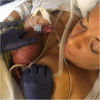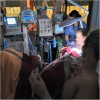Mother-newborn couplet care: Nordic country experiences of organization, models and practice
- PMID: 38086962
- PMCID: PMC10716037
- DOI: 10.1038/s41372-023-01812-3
Mother-newborn couplet care: Nordic country experiences of organization, models and practice
Abstract
Mother-Newborn Couplet Care is a concept and is defined as the provision of care for a sick or preterm newborn in close proximity to and coupled with the care for the mother from the birth of the infant and for as long as the mother needs hospital care. This concept of care requires system change in both obstetrics and pediatrics in terms of the planning and organization of care, equipment and design of units. Accordingly, strong leadership setting clear goals and emphasizing a culture of cohesive care, supported by targeted education and training is crucial to ensure high-quality care of all mother-newborn dyads without separation. We describe various organizational models of Mother-Newborn Couplet Care used in Sweden and Finland and implementation processes. We envision a future where newborns and mothers are always together, irrespective of medical needs, and form an inseparable center around which healthcare services and providers are organized.
© 2023. The Author(s).
Conflict of interest statement
The authors declare no competing interests.
Figures





References
-
- World Health Organization, United Nations Children’s Fund, World Bank Group. Nurturing care for every newborn: thematic brief. Geneva: World Health Organisation; 2021.
-
- EFCNI, Westrup B, Kuhn P, Bergman N, Daly M, Guerra P, et al. European Standards of Care for Newborn Health: Family access: EFCNI; 2018. Available from: https://newborn-health-standards.org/family-access/.
Publication types
MeSH terms
LinkOut - more resources
Full Text Sources

